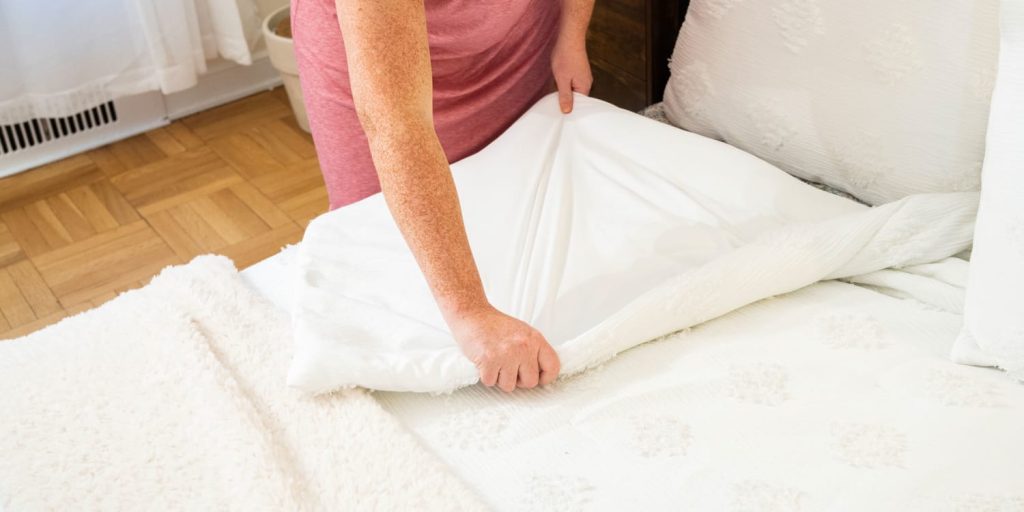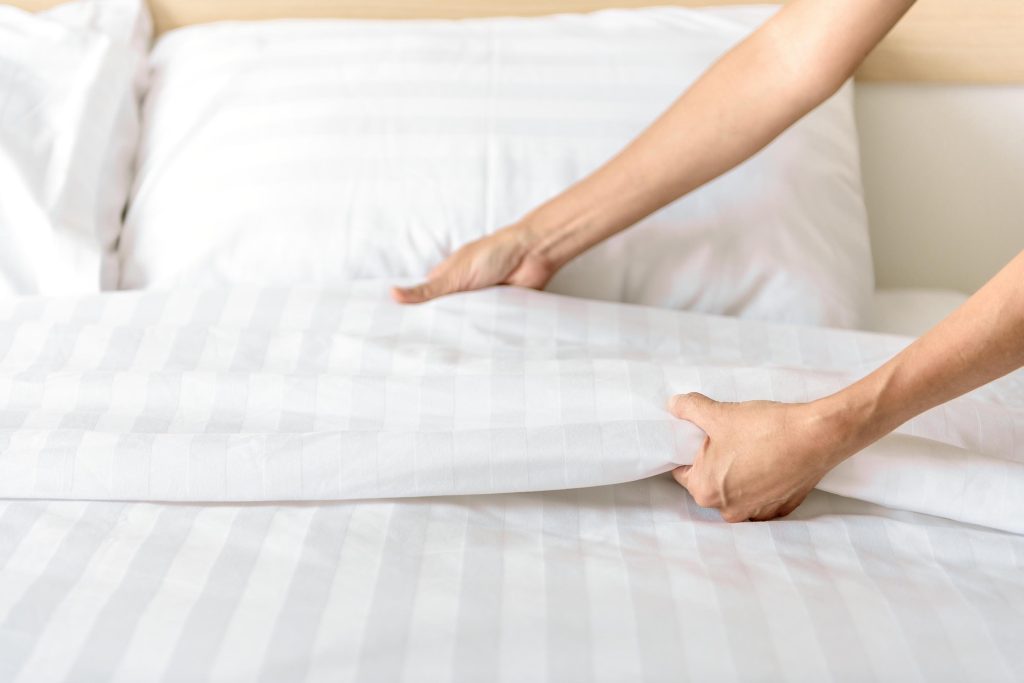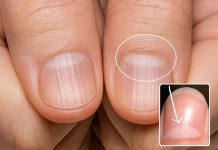Your bed linens are more than just a soft layer that makes your bed comfortable—they play a crucial role in maintaining hygiene and ensuring restful sleep. Over time, sheets, pillowcases, and blankets collect sweat, body oils, dust, and allergens, all of which can impact your health and sleep quality. Maintaining clean bed linens not only enhances comfort but also reduces the risk of skin irritation, allergies, and respiratory issues.
Knowing how often to change your bed linens, as well as the best washing and storage practices, is essential for a fresh and inviting sleep environment. This guide will explore how frequently you should change your bedding, the best washing techniques, storage tips, and variations that cater to different needs, including allergy sufferers and seasonal changes.
How Often Should You Change Your Bed Linens?
The frequency of changing your bed linens depends on various factors, such as personal hygiene, allergies, and environmental conditions.

- General Recommendation: Most experts suggest changing bed linens once a week to maintain cleanliness and hygiene.
- For Those Who Sweat Heavily: If you tend to sweat a lot during sleep, consider changing your sheets every 3–4 days to prevent bacteria buildup and odor.
- For Allergy Sufferers: If you have allergies or asthma, washing and changing your bed linens at least twice a week can help minimize exposure to dust mites, pollen, and pet dander.
- For Individuals with Sensitive Skin: Those with sensitive skin or acne-prone skin should change pillowcases every 2–3 days to prevent the buildup of oils and bacteria that can cause breakouts.
- If You Sleep with Pets: If your pets share your bed, washing linens more frequently—ideally every 3–4 days—can help control pet hair, dander, and dirt accumulation.
- During Illness: If you’re sick, change your sheets more often to prevent reinfection and promote a clean recovery environment.
Step-by-Step Guide to Changing and Washing Bed Linens
Ingredients Needed:
Fresh, clean bed linens (fitted sheet, flat sheet, pillowcases)
Mild detergent
Optional: Fabric softener or essential oils for added freshness
Directions:
- Remove Old Linens: Strip the bed completely, removing all sheets, pillowcases, and blankets. If any stains are present, treat them with a stain remover before washing.
- Sort by Fabric Type: Separate bed linens by fabric type and color to prevent damage and discoloration during washing.
- Wash with Care: Use a mild detergent and wash on a gentle cycle with warm or hot water (depending on fabric care labels). Adding a cup of white vinegar can help eliminate odors and soften fabrics naturally.
- Dry Thoroughly: Tumble dry on a low-heat setting or air dry to preserve fabric quality. Avoid over-drying, as it can weaken the fibers over time.
- Iron for a Crisp Finish (Optional): If you prefer a neat, wrinkle-free look, iron your sheets on a low heat setting before making your bed.
- Make Your Bed: Once the linens are fresh and dry, neatly arrange them on your bed. Fluff pillows and smooth out any creases for a cozy and inviting look.
Storage Tips for Keeping Bed Linens Fresh
Store extra sets of bed linens in a cool, dry place to prevent mold and mildew growth.
Use breathable fabric bags instead of plastic containers to keep linens fresh and prevent odors.
Add sachets of lavender or dried herbs to your linen storage to keep them smelling fresh.
Rotate between at least two or three sets of sheets to reduce wear and extend their lifespan.

Variations for Different Needs
- Allergy-Friendly Linens: Opt for hypoallergenic sheets made from organic cotton or bamboo, as these materials are less likely to trap dust mites and allergens.
- Seasonal Bedding Adjustments: In winter, switch to flannel sheets or heavier blankets for warmth. In summer, opt for lightweight, breathable linens like linen or percale cotton.
- Luxury Linens: High-thread-count sheets or silk pillowcases provide a soft, smooth texture that enhances sleep comfort while benefiting your skin and hair.
FAQ (Frequently Asked Questions)
1. How often should I change my bed linens if I have sensitive skin?If you have sensitive or acne-prone skin, changing your pillowcases every 2–3 days and sheets every 3–4 days is recommended. This helps minimize contact with bacteria, oil, and dead skin cells that can trigger irritation.
2. Can I go longer than a week without changing my bed linens?While not ideal, you can stretch it to two weeks if necessary. However, the longer you wait, the more bacteria, dust mites, and allergens will accumulate. If your bed starts feeling unclean or developing an odor, it’s time to change the sheets.
3. Is it necessary to wash bed linens in hot water?Hot water (around 130°F/54°C) helps kill bacteria and dust mites effectively. However, always check fabric care labels, as some delicate materials require cool or warm water.
4. How can I prevent wrinkles in my bed linens?To minimize wrinkles, remove sheets from the dryer promptly and fold them immediately. If you air-dry them, smooth them out before they fully dry. Ironing also helps create a crisp, polished appearance.
Final Thoughts
Keeping your bed linens fresh and clean is essential for both hygiene and comfort. By following a regular washing routine, choosing the right fabrics, and storing linens properly, you can create a sleep environment that is both inviting and beneficial to your health. Whether you prefer crisp, hotel-style sheets or soft, cozy flannel, clean linens will always enhance your sleeping experience. Make it a habit to refresh your bed regularly, and enjoy a cleaner, healthier night’s sleep!

















